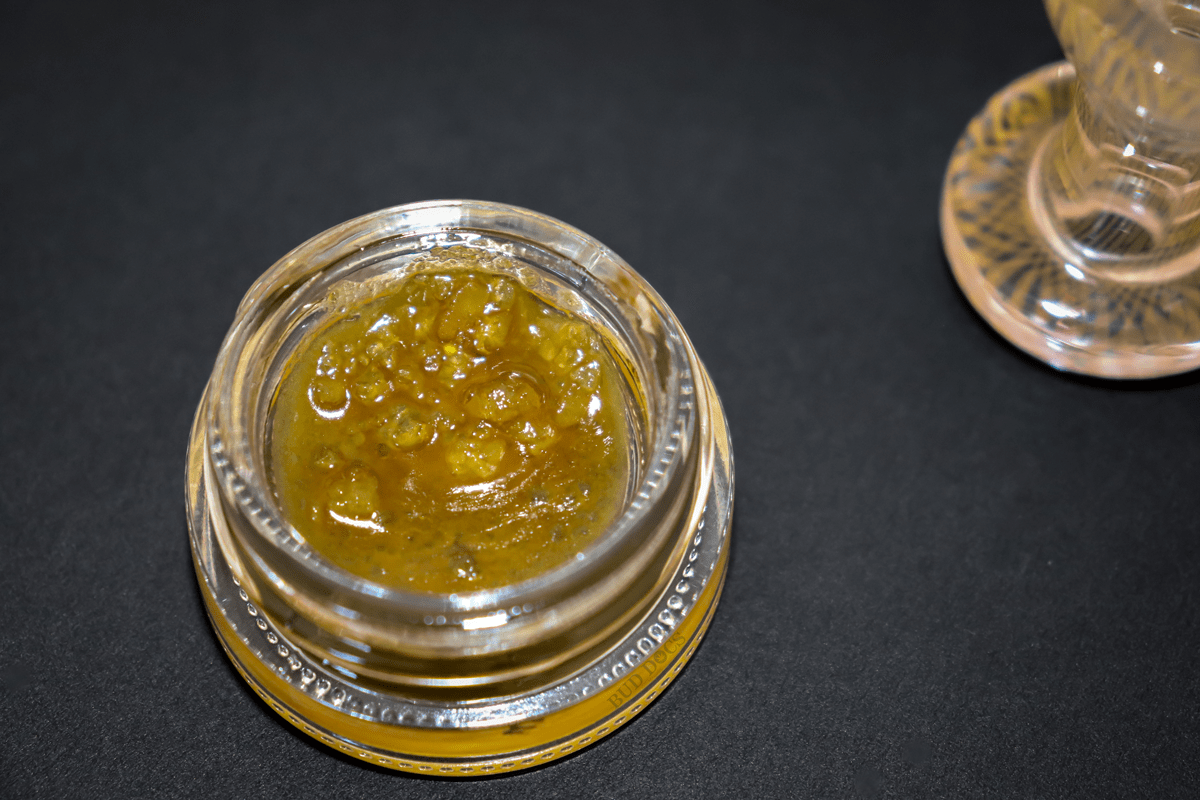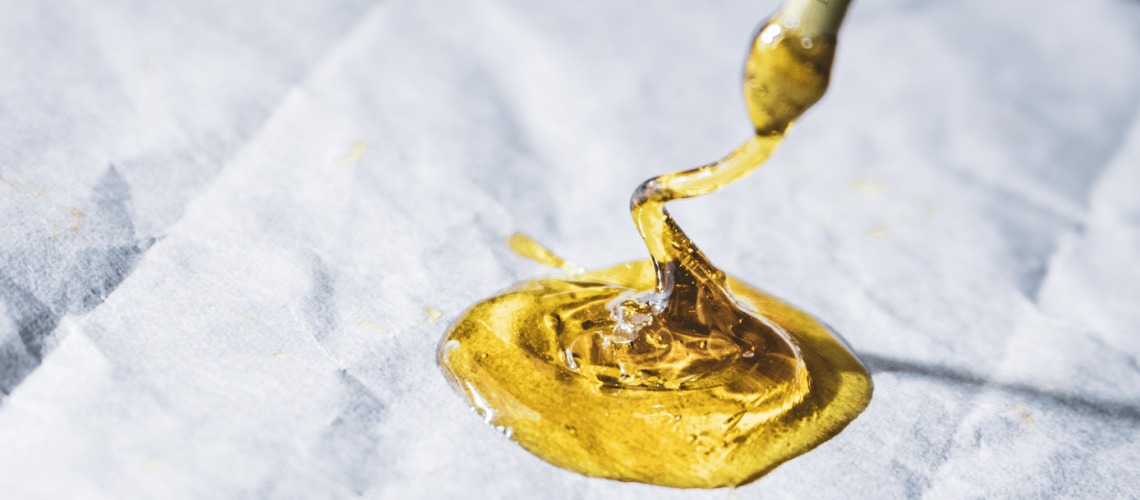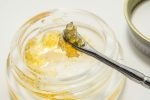Long-standing medical cannabis patients within the state of Florida may have heard the terms “resin” and “rosin” thrown around a couple of times while purchasing medicine from their local dispensaries. Both of these types of products have been available to Florida patients since late 2019 with both resin and rosin options steadily increasing across our current 22 dispensary licenses. Although resin and rosin are not the only types of cannabis concentrates available, they are arguably gaining greater popularity over other types of inhalable concentrates, and some for good reason! Today, we will talk about the differences between how “resin” and “rosin” are made, priced, and potentially used as medicine!
As a note: both resin and rosin can be developed and sold as a “live” product, with non “live” products assumed to be “cured”; this terminology concerns the input material used to make the cannabis extract. “Live” refers to the array of biologically active processes and constituents present within a cannabis plant that is newly ready for harvest. Preservation of volatile constituents is achieved by flash-freezing the whole plant and keeping it frozen until it is time for extraction. Otherwise, allowing the whole plant to dry and “cure” post-harvest reduces volatile compound composition while developing as a more shelf-stable product; this is also the period in which chlorophyll begins degrading, reducing the natural harsh “green/plant-y” taste experienced from consuming improperly cured flower!

So, let’s talk about the different ways “resin” and “rosin” are created!
Resin
The starting material for resin begins with either whole flower, ground flower, shake/trim, or a combination of the three; resin is made by “washing” cannabis material with a solvent to strip the desired cannabis constituents from whole plant material. Then, this mixture is purged of the solvent/s used, leaving behind a mixture of a majority of cannabis constituents, including cannabinoids and terpenes. As both the input material and solvent used can affect perceived quality, and therefore price, we will briefly discuss solvents used within the cannabis industry for resin extraction.
Process
Ethanol-based solvents can extract the most broad array of cannabis constituents and are generally the cheapest solvent. Due to undesirable plant constituents being extracted within this concentrate intended for inhalation, such as chlorophyll and waxes, choosing ethanol-based solvents intended for inhalation is cautioned, especially if the patient has a history of lung sensitivity.
Hydrocarbon-based solvents, such as isobutane, butane, and propane, are popular solvents utilized for cannabis extraction due to their low boiling points and ability to extract a wide array of desirable constituents! Due to these hydrocarbon solvents having slightly different physicochemical properties, it is not uncommon for extractors to use a combination of hydrocarbon-based solvents in certain ratios to achieve a desired final product.

Quality and Price
Considering resin price and quality, a concentrate created from fresh-frozen whole flower will run patients the highest price tag and will generally be considered the “highest quality”. On the other hand, trim/shake from cured flower contains lower trichome density compared to their whole flower counterparts. As trichomes contain the majority of the constituents extractors are looking to strip from the plant, the resulting extracted resin from trim/shake will contain higher levels of undesirable chlorophyll and waxes, reducing perceived quality and therefore price.
Rosin
The starting material for rosin, on the other hand, can be whole flower, dry-sift kief, sieved trichomes, or ice-water extracted trichomes; rosin is made by mechanically separating the oily constituents within the trichomes from the epidermal tissue withholding them utilizing heat and pressure (think “squishing”!). The resulting extracted oil can be consumed immediately, cured at various temperatures, decarboxylated for cartridges or edibles, or further processed (i.e. microdiamonds/jam, solventless THCA).
Quality
Similar to resin, the quality of input material will heavily influence the quality of the end product; material that contains high-trichome density, such as whole flower, will yield higher levels of “desirable” trichomes compared to trim/shake. The most “desirable” trichomes are going to be those with the highest ratio of desirable oily constituents, such as cannabinoids and terpenes, to plant material and will generally be ice-water sieved between 73-120 microns. Material captured at microns lower than 73 will comprise mainly cystolytic (headless), simple bulbous, and capitate sessile trichomes whereas the material captured at microns higher than 120 will contain higher levels of residual plant material. Moreover, high-quality rosin creation is unique in the identification and growing practices of choosing genetics that produce mainly capitate-stalked trichomes with strong cell walls that can withstand sieving.
Price
Considering the price, live rosin made from high-quality fresh-frozen material that is washed to catch lower-yielding, higher-quality trichomes will run patients the highest price tag. Rosin that was crafted from material collected from all-sized micron sieves, typically ranging from 20-200 microns, is termed “full spectrum”. Full spectrum rosin will generally be more affordable as the total yield is increased due to combining sieved material from different-sized collection bags or sieves.
Finally, resin and rosin are both purchased as concentrates for either inhalation/vaporization or decarboxylation for edible creation. Since both of these products contain very high levels of THC, they are recommended only for experienced patients, patients with chronic conditions, and patients who require higher levels of pulmonary-delivered fast-acting medication. Due to the high levels of THC, these concentrates can quickly raise tolerance, resulting in a larger dose being required to reach the same therapeutic outcome over time.
Please speak to your licensed physician before purchasing or consuming any new medical cannabis products.
By Evan Bentz
Related
-
Improving sleep quality with Medical Cannabis
As a medical professional, I am constantly seeking new ways…
-
Cannabis Dependence and Withdrawal Syndrome
The world has always been curious about cannabis, and how…
-
5 Benefits of Using Cannabis Flower
The cannabis flower is the MVP of the cannabis industry…
-
What is the difference between THC and THCa
Cannabis is known for it's powerful and intoxicating effects but…
-
What is Ground Flower?
The Cannabis flower prices in Florida can vary from $27…
-
What is THCA?
After walking into my local smoke shop, I noticed roughly…
-
Understanding our Endocannabinoid System
The endocannabinoid system plays many important roles in the human…








